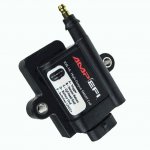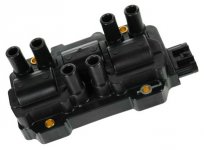300turbski
New member
Thanks. Ill keep that in mind.Be aware that ARP main studs will require some modifications to one stud to mount the oil pump.
Thanks. Ill keep that in mind.Be aware that ARP main studs will require some modifications to one stud to mount the oil pump.
added.The cam is only about $250.
I don't see any blow off valve or wastegate.
hoping to get a parts truck for that stuff.I don't see the EFI system including sensors and cable assemblies.
added.Don't see the Scorpion 1059 roller rocker arms. (If the head is 1985 or 1986)
ok. was just going to tell him as small as possible to make the bore round.The pistons will not be standard size.
They will be at least .030" oversize.
Your machinist will determine the piston size.
no.Do you already have the turbocharger?
parts truck.What did you decide for an intake manifold?
| ARP main studs (ARP-152-5401) | 94 |
| ARP con rod bolt kit (ARP-152-6001) | 59 |
| Fel-Pro 1024 head gasket | 57 |
| turbo | 500 |
| Intercooler | 100 |
| charge piping | 200 |
| Injectors | 70 |
| cam | 250 |
| programming | 500 |
| AFPR | 40 |
| fuel pump | 61 |
| pistons (UEM-1186H-030) | 190 |
| machine work | 1000 |
| lifters | 150 |
| piston rings | 50 |
| Scorpion 1059 roller rockers | 331 |
| efi parts truck (or all parts from jy) | 750 |
| other | 500 |
5000 |
Because you are looking at using a stock head, the turbocharger should have a compressor inducer in the 55 to 57 mm range.Would this be a good turbo?
Any of those three will work.Single Ball Bearing GT3076 0.82 A/R Turbo Charger 3" V-band
www.cxracing.com
Ceramic Dual Ball Bearing GT3082 0.63 A/R Turbo Charger 450HP
www.cxracing.com
Ceramic Ball Bearing GT35 GT3576R Turbo Charger 0.60 A/R Compressor
www.cxracing.com
I'm thinking one of these will work?
What would fit? That depends on your project goals. Please post that list up, as we could design a perfect combo but for the wrong results. That can quickly become a waste of time and money. However, it can also be a springboard, but in that case go easy the first round.Injectors I found are GM injectors rated for somewhere in the 54 lb @58 psi range (12609749), would these work or what injectors would fit? that would have more in the tank if I increased the fuel pressure?
Depends on your data system. While it can't do everything, MegaLogViewer can read many types of log files, and better, it can do analysis on them. Scatter plots, histograms, and of course data traces to see how each parameter plays into the results. Even little things like overlaying of two runs, to compare where each was better, is a big deal to tune better and quicker. That's very important with a power adder setup for power potential, but especially reliability.What tuning program would you recommend?
Coil packs, coil-on-plug and similar stuff are options, if you will be adding a crankshaft wheel and sensor. So if considering that direction, start searching for options to get that trigger wheel and sensor on your crank or damper. There are other options to get there with some systems, but the crank wheel is most common, and the majority of systems can use it.More details on the coil packs option? I need some part numbers or links.
Coil packs, coil-on-plug and similar stuff are options, if you will be adding a crankshaft wheel and sensor. So if considering that direction, start searching for options to get that trigger wheel and sensor on your crank or damper. There are other options to get there with some systems, but the crank wheel is most common, and the majority of systems can use it.
More details on the coil packs option? I need some part numbers or links.


